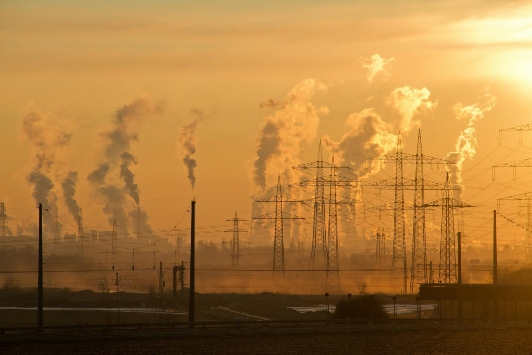The climate crisis explained
Read this article, written by Youth Leads UK to understand what the climate crisis is and small steps you can do to support.



What are Greenhouse Gases?
Since the industrial revolution, the human demand for energy has increased exponentially. To cope with this; we greatly depend on the use of fossil fuels, such as cola and oil, to produce energy.
These natural resources are unsustainable and lead to the contribution of a large amount of greenhouse gases to the atmosphere.
Greenhouse gases are how the world keeps itself warm. They are often compared to a warm blanket, and include gases such as carbon dioxide and methane; however the growing volume of these gases leads to rising temperatures as the “blanket” gets thicker.
Changes in climate
- Increased global temperature
- Extreme weather and disasters
- Precipitation extremes
- Sea level rise
- Changes in land use and growing seasons
Effects of climate change
- Extreme heat
- Air and water pollution
- Reduced food and water quality
- Changes in infectious diseases and vector transmissions
- Increasing allergens
Health impacts
- Heat related illness
- cardiovascular disease, stroke and other chronic conditions
- Injuries and death
- Mental and neurological disorders
- Zoonotic, vector and water-borne diseases
- Respiratory diseases and asthma
Interventions and strategies
- Early warning and preparedness
- Prevention or reduction of disease, illness and injury
- Community engagement
- Education and awareness raising
- Adoption and intergration
Many of the known impacts of climate change are extreme for humanity. Yet a lot of the consequences are unknown, and it will be a lot easier to have a mitigation response than having to find solutions to a vast array of problems that may emerge if we don’t act now.
What can you do?
Even small changes can have a big difference.
Renewable energy
Using methods of renewable energy in your home, such as solar panels, are great alternatives for emitting less greenhouse gases. Also, save energy by switching off your lights, appliances, and heating when not necessary.
Travel green
Walk or cycle wherever possible. Also, try to commute using public transport to greatly reduce your carbon footprint. If you really want to make a difference, invest in an electric car that significantly reduces greenhouse gas emissions.
Water conservation
Reduce the use of water by taking shorter showers and not letting water run when not in use. Also stay mindful of your water bill and use renewable sources of water if not possible. Reduce the use of energy in heating water for example, by washing clothes and dishes at lower temperatures.
Think about what you eat
Shifting to a more plant-based diet can significantly lower your environmental impact. Also eating more organic and locally-produced foods can decrease your carbon footprint. Cut down on your food waste to be more sustainable, maybe even try a sustainable recipe.
Reduce waste and recycle
Follow the 5 R’s: Refuse the use of single-use and disposable plastics. Reduce waste and the use of plastics. Recycle materials that are recyclable, such as paper and glass. Reuse old items such as clothes. Finally, don’t forget to Remind others to do the same.
Stand up
We are the first to know our impact on the planet and we will be the last who can do something about it. Speaking up and demanding change is one of the most powerful things we can do. Talk to your local MP and tell them to commit to action to protect our natural world.
Unless drastic action is taken for the protection of our planet, the world of tomorrow will not be the same.
Find out more
Visit Climate Action & United Nations for more info and read the original article written by Youth Leads here.
Related
Why Littering is Everyone’s Problem
[rt_reading_time...

Save carbon through walking, cycling and Bee Network
[rt_reading_time...
